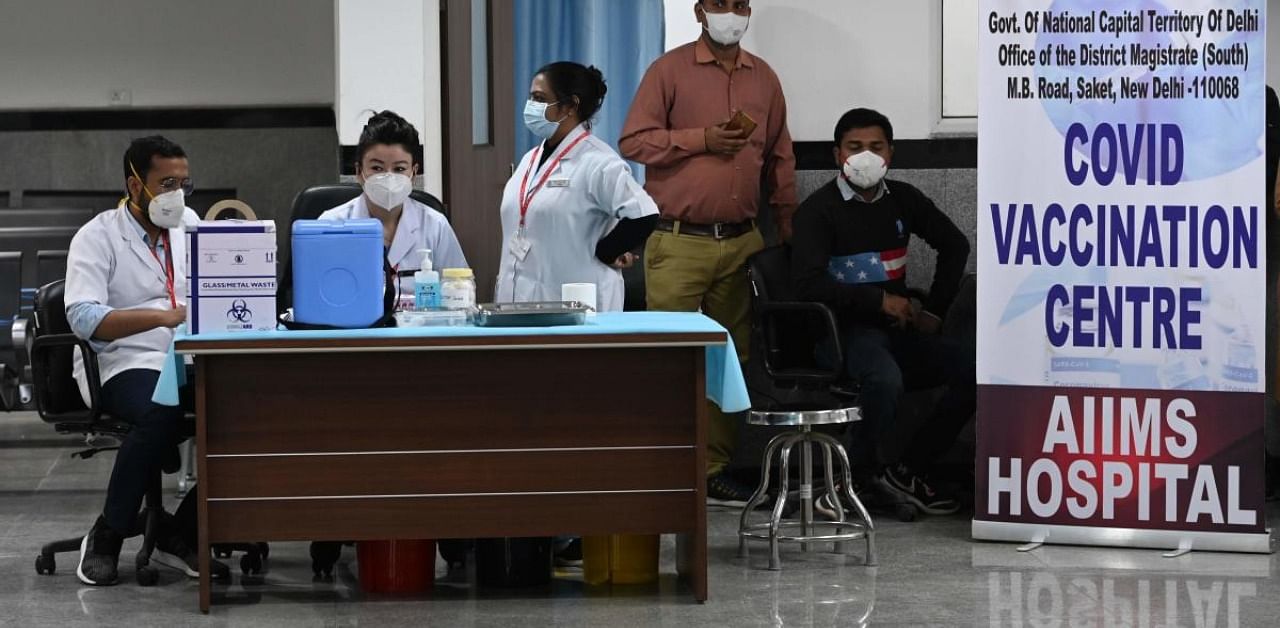
PM Narendra Modi on Saturday rolled out the world's biggest vaccination programme. In the first day of the vaccination drive, over 3 lakh healthcare workers will be inoculated.
The government has dubbed the vaccination drive "probably the beginning of the end" of Covid-19.
While launching the massive vaccination drive, PM Modi congratulated the countrymen and said, "Everyone was asking as to when the vaccine will be available. It is available now."
PM Modi on Saturday reminded people that two doses of the coronavirus vaccine are very important. "Experts have said that there should be a gap of one month between both vaccinations," he added. He further asked people to not make the mistake of taking off the mask and not maintaining social distancing after getting the first dose because immunity develops after the second dose.
Lauding the efforts of the scientific community, PM said, "Normally, it takes many years to make a vaccine but in such a short span of time, not one, but two 'Made in India' vaccines are ready. Meanwhile, the work on other vaccines is progressing at a fast pace".
"We have got two vaccines in such a short time, it's a testimony to our scientists' talent and skills," the prime minister said.
The prime minister hailed the vaccination programme, saying that it was driven by humanitarian concerns as those exposed to maximum risk are getting priority. "Such a vaccination drive at such a massive scale was never conducted in history. There are over 100 countries having less than 3 crore population and India is administering vaccination to 3 crore people in the first phase only. In the second phase, we've to take this number to 30 crore," PM Modi said.
As India takes another leap in the fight against the Covid-19 pandemic, here are the 10 things that you should know:
1. A total of 3,006 session sites across all states and union territories were virtually connected during the launch at 10.30 am by the Prime Minister, and around 100 beneficiaries will be vaccinated at each session site.
2. Jaipur's Sawai Man Singh (SMS) Medical College Principal Sudhir Bhandari will be the first person in Rajasthan to be given the shot, while in Madhya Pradesh, a hospital security guard and an attender will be among the first to get the vaccine.
Also Read — Here's who shouldn't be taking Covid-19 vaccine
3. Two vaccines will be administered today -- the Oxford Covid-19 vaccine Covishield, manufactured by the Serum Institute, and indigenously developed Covaxin of Bharat Biotech for restricted emergency use in the country.
4. The full initial procurement of 1.65 crore doses of the two Covid-19 vaccines has been allocated to all states and UTs in proportion to their healthcare workers database.
5. States have been advised to organise vaccination sessions taking into account 10 per cent reserve/wastage doses and an average of 100 vaccinations per session per day.
6. In India, the vaccination drive has been planned in a phased manner, identifying priority groups and informing candidates via phones. Healthcare workers, both in government and private sectors will receive the vaccine during this phase, the health ministry said in a statement.
Also read — Covid-19: What happens at a vaccination drive?
7. The government aims to manage the entire process digitally with its own app, Co-WIN, which will link every vaccine dose to its recipient.
8. The government has procured 11 million doses of Covishield each costing Rs 210 including GST. The Centre is procuring 55 lakh doses of Covaxin from Bharat Biotech India Limited. "For 38.5 lakh doses, the price is Rs 295 each, excluding taxes. Bharat Biotech is providing 16.5 lakh doses for free which ultimately brings the cost of each dose of Covaxin down to Rs 206," Union Health Secretary Rajesh Bhushan had said.
9. The coronavirus pandemic, which reached India last January, has killed more than 1.52 lakh people in the country so far and infected over 1.05 crore.
10. According to the government, the shots will be first offered to an estimated one crore healthcare workers, and two crore frontline workers, and then to persons above 50 years of age, followed by persons younger than 50 years of age with associated comorbidities.